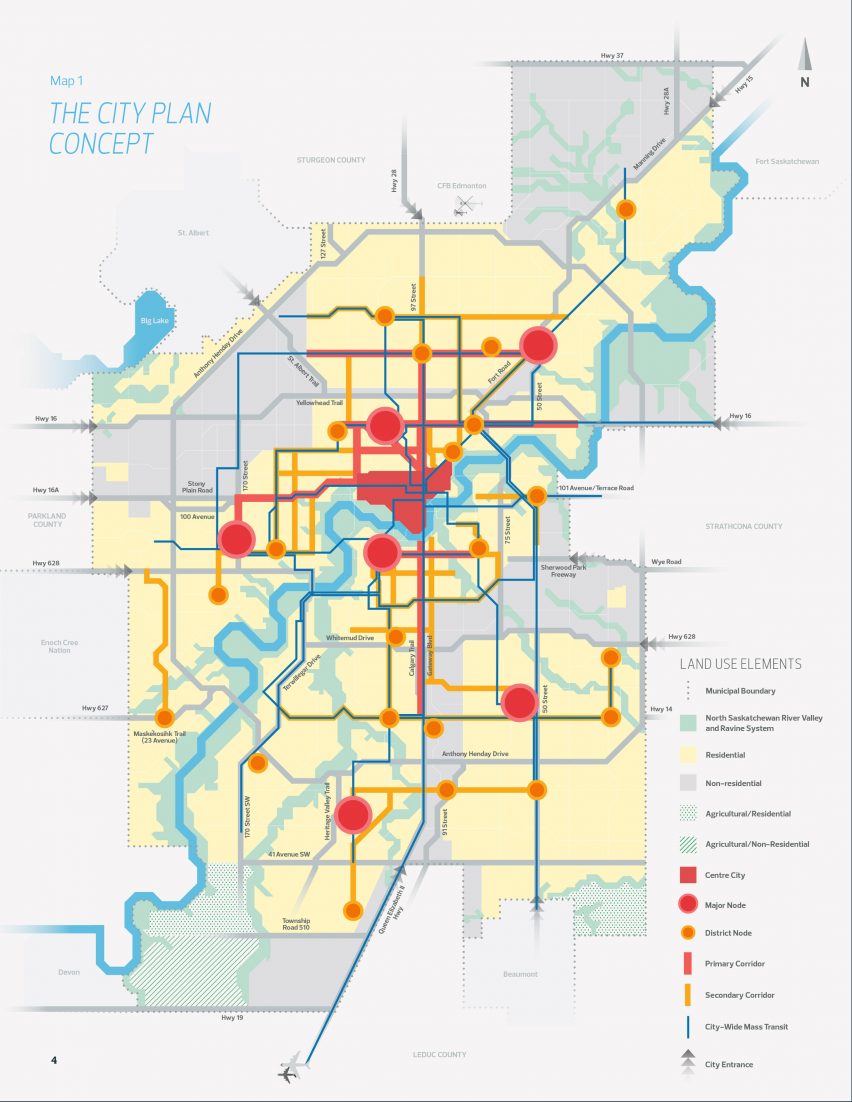
15-minute city an "easy way to explain an old concept" says Edmonton planner
A planner from Edmonton, Canada, has defended its 15-minute city plan after criticism from locals, saying that the plan uses age-old concepts and "will enable the City of Edmonton to support growth more efficiently".
Edmonton's principal planner Michael Strong has refuted the idea that the city's plan to re-organise into walkable communities would restrict people's movements, amid rising controversy surrounding the concept of 15-minute cities.
"There are not – nor will there ever be – any restrictions on moving from one district to the next," Strong told Dezeen.
Misconceptions "have quickly spread across social media"
The city's plans have recently being criticised with a viral video showing a group of protestors confronting planner Sean Bohle on the street, asking him if the plans were meant to make lockdowns easier.
"Misconceptions about district plans restricting and monitoring people's movements have quickly spread across social media," said Strong.
"It's difficult to say where these misconceptions stem from," he continued.
"Their concerns are counter to what kind of city Edmontonians have told us they want through our two-year public engagement on the city plan, as well as the existing plans our city council has approved to help achieve it."
A new term for an old idea
The 15-minute city concept, which was devised by French-Colombian scientist Carlos Moreno, proposes creating cities where people have access to key amenities by travelling no more than 15 minutes on foot or by bike.
However, it has become the basis of a widely debunked conspiracy theory that suggests people's movements will be restricted. Last week, UK member of parliament Nick Fletcher said 15 minute cities "will take away personal freedoms" in the House of Parliament..
"It's a new term for a very old idea," said Strong, citing the church-centric districts of 17th and 18th-century cities.
"Cities are embracing the 15-minute city idea because it is an easy way to explain an old concept."

Edmonton's district plan comes from a general City Plan that was adopted in 2020. Most of the plan takes into account planning and design changes needed to meet the city's growth as it approaches two million residents. It references mostly new developments as the city grows.
It includes provisions addressing amenity disparity between communities and estimates the cost of updating existing infrastructure.
Expansion of roadways inefficient
Under the plan, the city would install transit systems. Its goal is for 50 per cent of the transportation needs of the city to be fulfilled by public transportation.
Bike lanes and walking paths will also be integrated into the new development.
According to the plan, the city will continue to use the existing roadways, adding transit and biking routes when possible, but will limit the expansion of roads for motor vehicles because of its "inefficient" use of limited resources and constrained space.
"District plans will give Edmontonians easier access to meet most of their daily needs, including school, employment, shops, recreation and more, within a 15-minute walk, roll or transit trip from their home," said Strong.
"It's about changing the way Edmonton plans and supports development and growth to move us closer to our vision for a more connected, prosperous, healthy and climate-resilient city."
Other cities that have implemented plans like this in North America include Portland, which in 2010 began to orient the city around 20-minute communities.
Recently, architecture studio ODA released a 15-minute plan for a new development in Astoria, Queens.